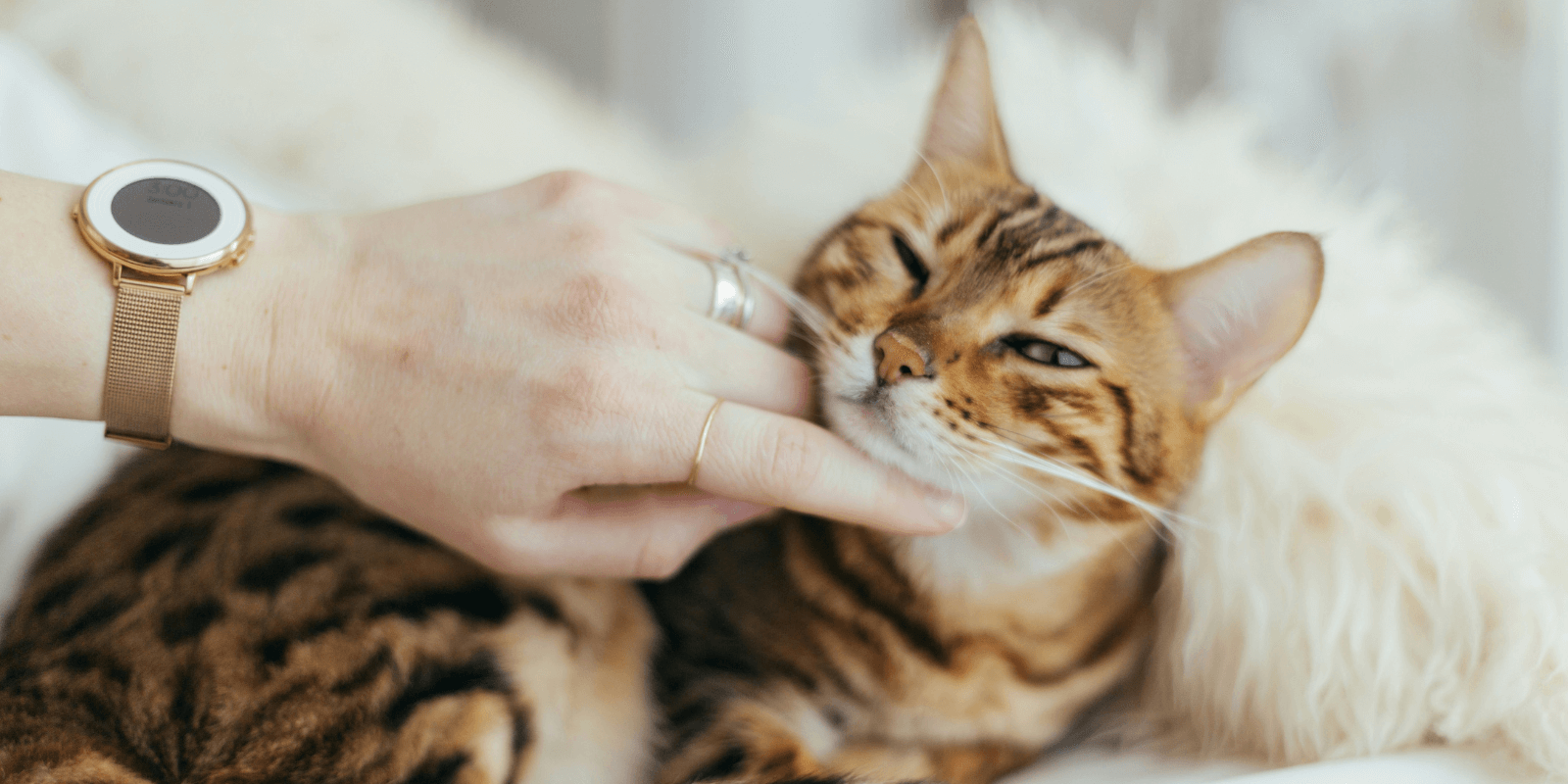Getting stung by a bee is uncomfortable for anyone – human or animal. But animals are particularly vulnerable due to their time outdoors and inability to communicate their pain or discomfort. As a pet owner, it can be difficult to diagnose a bee sting or know what to do next.
If your cat is displaying signs of being stung by a bee, there are a few steps you can take. First, you should try to determine whether the injury is from a bee or something else. Next, you attempt to ease your pet’s pain and reach out to a vet if necessary.
Below, we further explain how to determine whether your cat has been stung by a bee and what to do next.
Signs That Your Cat Was Stung by a Bee

Photo by Dmitry Grigoriev on Unsplash
There are a few signs that your cat may have been stung by a bee. However, keep in mind that these symptoms can look similar to those of other types of injuries, rashes, or insect bites. When in doubt, reach out to a trusted veterinarian for examination.
If your cat has been stung by a bee, there are several common signs you can look for:
- Swelling, pain, and/or redness at the sting site
- Lameness or limping due to pain
- Sounds of distress, like whining or meowing
- Compulsive licking or biting of the sting site
- If stung near the mouth, look for signs of drooling or difficulty eating
- Behavioural changes, such as being more agitated or withdrawn than usual
While mild pain and swelling are common, serious symptoms indicate a medical emergency. Take your pet to the emergency vet if they are experiencing any of the following symptoms:
- Allergic reactions, such as respiratory distress, weakness, or an irregular heartbeat
- Anaphylactic shock symptoms, such as collapsing or difficulty breathing
- Hives, disorientation, or stumbling
- Vomiting
- Rapid breathing
- Excessive swelling
- Pale gums
- Diarrhea
These are all signs that your cat needs to be seen by a vet immediately.
Is it a Bee Sting or Something Else?

Photo by Marlon Soares on Unsplash
As stated, bee sting symptoms can look similar to those of other types of insect stings or bites.
To determine if your cat has been stung by a bee versus another type of insect, you can look for certain signs:
- Bee stings: A bee may leave its stinger in the cat's skin, which can continue to release venom. You may find a stinger at the sting site, especially if near a beehive.
- Hornet and wasp stings: Unlike bees, hornets and wasps do not leave their stingers behind. They can also sting multiple times, so you might see multiple stings if these insects are involved.
- Other insects: For example, mosquito bites tend to be in less hairy areas, like the nose and ears. Flea bites are very small with several fleas usually present. Spider bites are usually a single bite and may develop a pustule over a few days.
How Quickly Will a Cat React to a Bee Sting?
Cats may show signs of distress and pain almost immediately after being stung. Some common immediate reactions include crying out in pain, limping, or frantically licking or pawing the affected area. Signs of inflammation, like redness and swelling, can appear within 20 minutes of the initial sting.
Note that signs of an allergic reaction can appear within ten minutes to a few hours after the sting. It's crucial to monitor your cat during this time, because the sting could potentially cause a severe reaction. Contact your emergency veterinarian if this occurs.
Steps to Take if Your Cat is Stung by a Bee

Photo by Paul Hanaoka on Unsplash
If you are pretty sure that your cat was stung by a bee, take the following steps to address the issue as soon as possible. This is the best way to avoid further discomfort or infection.
1. Find the location of the sting
Inspect your cat’s body for a bee sting if they are suddenly displaying pain or discomfort. Immediately consider an insect/bee sting if your cat is pawing at her face or foot, or if swelling is present. Take note of where the sting has occurred.
2. Look for the bee or insect
See if you notice a bee or other type of insect fleeing the scene. You might need to describe the insect to your veterinarian later to help them determine whether it was a bee, wasp, or something else. If it's a spider, try to take a photo or capture it for identification, especially because some spiders are venomous.
3. Remove the stinger (if possible)
For bee stings, promptly remove the stinger (if present) to reduce venom injection. You can use a card (like a credit card) to scrape it off. Avoid tweezers, as this can squeeze more venom out.
4. Reduce swelling
Apply a covered (use a paper towel or a tea cloth) ice pack to the sting site to reduce swelling. Keep the ice pack there for about 10 minutes.
5. Soothe the sting site
A bee’s venom is highly acidic, which causes painful inflammation. You can attempt to neutralize the venom by applying a paste of baking soda and water. Chamomile lotion can also be effective at soothing irritation. For multiple stings, consider a soothing oatmeal bath.
6. Prevent scratching
Continuous scratching can cause irritation and infection. If your cat keeps scratching at it, consider using a cone collar to prevent them from reaching the area.
7. Contact your vet
Reach out to a trusted veterinarian to diagnose the problem and provide recommended treatment. Always consult a veterinarian before administering any oral antihistamine, like diphenhydramine, to ensure correct dosing.
8. Monitor progress
Keep a close eye on your cat to see whether their condition worsens or if new symptoms emerge. Be on the lookout for signs of an allergic reaction, such as fainting or breathing problems. Cats can have delayed reactions, and prompt treatment can prevent more serious complications.

Photo by Sandy Millar on Unsplash
Get Started with Pet Insurance for Pet Emergencies
You can’t always prevent your pet from getting sick or injured. But you can get better prepared for pet emergencies with the help of reliable pet insurance.
At Furkin, we help pet parents by offering comprehensive pet insurance that can cover up to 80% of eligible costs associated with an unexpected illness or injury. So, if your cat is stung by a bee, you can rest easy knowing you can get your cat the care they need without the financial stress of paying completely out of pocket. Learn more about pet insurance today.
Featured image by Kirill Levchenko on Unsplash



